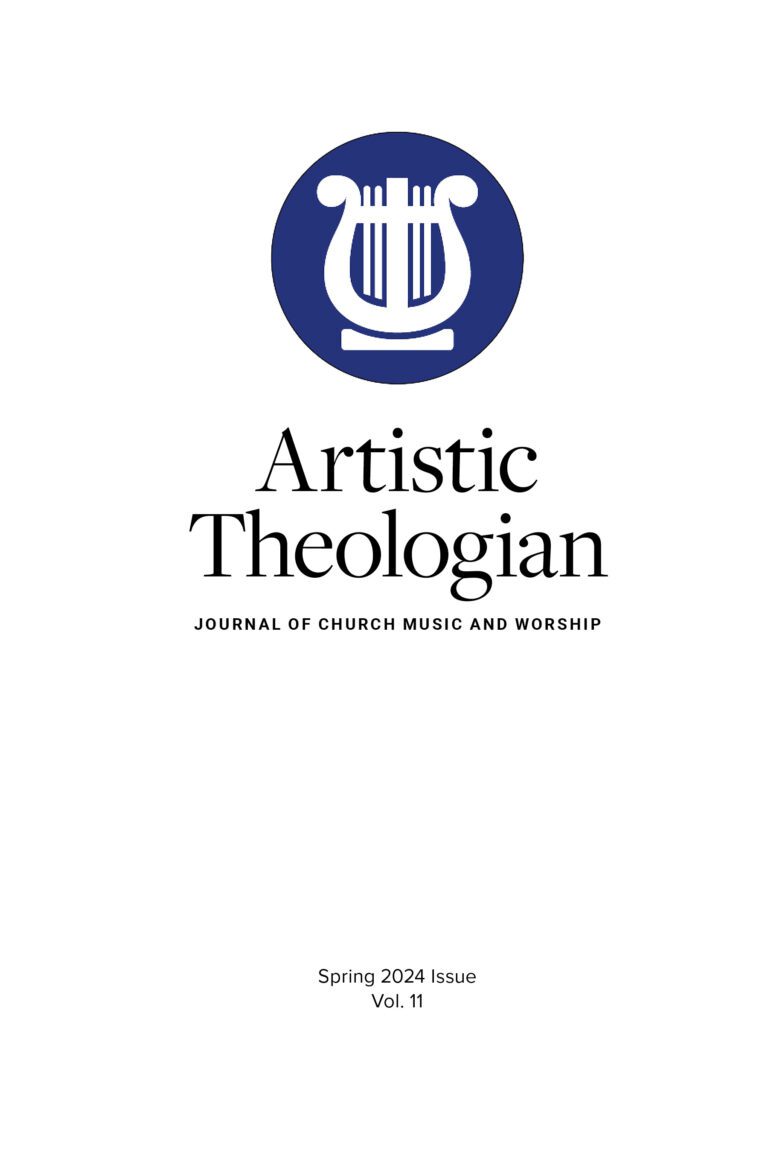
The Relationship of Doxology and Doctrine
Artistic Theologian
Volume 11, Summer 2024
Editor: Joshua A. Waggener
We Become What We Worship: A Biblical Theology Of Idolatry. By G. K. Beale. Downers Grove, Il: Intervarsity Press, 2008. 341 Pp. $38.00.
G. K. Beale serves as professor of New Testament Studies at Reformed Theological Seminary and has written over one hundred books and articles on theological topics from both the Old and New Testaments. In We Become What We Worship, Beale asserts, “What people revere, they resemble, either for ruin or restoration” (16).
After an introductory chapter, Beale begins chapter 2 with an in-depth study of Isaiah 6. Verses 9–10 have often been seen as problematic because it appears that God is telling Isaiah to speak to the nation of Israel in such a way that they would not repent (38). However, Isaiah’s commission should not be seen as God providing an opportunity for repentance but rather for judgment.
No study of idolatry in the Bible would be complete without an examination of Israel’s egregious worship of the golden calf in Exodus 32. Beale provides such in chapter 3 showing that Israel chose to worship (revere) a calf and subsequently began to act like a stubborn calf. Moses describes the people as being “stiff-necked,” “let loose,” “quickly turned aside from the way,” and “needed to be gathered together” (77–78). In contrast, Moses’s face shone after having been in God’s presence. Beale notes that a possible translation could be that his face “became horned,” which symbolized God’s wrath and caused the people to fear approaching him (80). The contrast between the calf-like people and Moses who resembled the “only true glorious power” symbolized by “ox horns flashing” on his face would not have been misunderstood by the Israelites (81). However, nearly all modern translations (except the Wycliffe and the Douay-Rheims 1899 American edition) do not translate Exodus 34:29, 30, and 35 in this way. Although fascinating to consider in the context of the golden calf narrative, one should be careful before declaring that Moses had horns after having spent time with the Lord on Mount Sinai.
Chapter 4 investigates idolatry’s origins in the Garden of Eden. Pride has often been the chosen categorization of Adam’s sin in Genesis 3, but Beale argues that idolatry is a better description because Adam chose not to revere God but “allowed the serpent to rule over him” (132). Consequently, Adam stopped reflecting God’s image (at least in part) and began to mirror the serpent’s character. Genesis 3 describes the serpent as a liar and a deceiver.
Beale surveys extra-biblical, early Jewish thought about idolatry in chapter 5. Notably, Philo espoused that “those who worship lifeless images will become as lifeless as those images” (143). Jewish commentary such as Philo’s help readers understand how first-century Jews interpreted biblical events.
In chapter 6, Beale transitions his argument to texts from the Gospels. He admits that the word “idol” and “false god” are rare, but the concept of idolatry is not absent (162). Jesus’s quotations of passages dealing with idolatry (e.g., Isa. 6 and 29) are well documented in all four Gospels. In Matthew 15:14, Jesus says the Pharisees are “blind guides of the blind.” Their commitment to tradition was causing them to be blind, deaf, and stale (176).
Surveying the book of Acts in chapter 7, Beale notes that in Acts 7:5, Stephen calls the men “stiff-necked”—an obvious reference to the golden calf event in Exodus (190). Similarly, Paul quotes Isaiah 6:9–10 in Acts 28:25–28 while under house arrest in Rome. Beale believes Stephen and Paul are quoting these Old Testament references because they could see the results of idolatry in Jewish society—“the nation’s commitment to some other object of worship, presumably dead traditions” (200).
In chapter 8, Beale notes that the writings of Paul present an opportunity to look at Beale’s thesis from a positive perspective—that of not only ruin, but also restoration. Paul writes in 1 Corinthians 6:17, “But the one who joins himself to the Lord is one spirit with Him” (223). This passage is closely related to 1 Corinthians 10:14–22, where in verse 20 Paul is urging the Corinthians to avoid idol worship because they would “become sharers in demons” (1 Cor. 10:21) (224).
Beale closes his biblical survey by exploring idolatry in Revelation in chapter 9. In referencing Revelation 9:20–21, Beale explains, “Idols are one of the main instruments used by the forces of darkness to keep people in darkness” (265). As long as people were worshiping idols, they would be “sharers in demons” and would be united with and a reflection of them.
Chapter 10 is devoted to how people are restored from ruin. Beale examines restoration examples found in the Gospels, Isaiah, Acts, Paul’s writings, and Revelation. Chapter 11 explores how people resemble idols in modern culture. Beale warns of the “excessive self-focus” found in both the “culture of the church” as well as in “non-Christian culture” (295). He closes with exhortations to be careful so that focus is not gradually shifted from God to things of the world (299).
Beale set out to prove that what people revere, they reflect, for either ruin or restoration. He makes a cogent argument based on ample biblical evidence.
We Become What We Worship was written for the “serious Christian reader” (34). Anyone with a desire, motivation, and time to learn more about the pervasiveness and seriousness of idolatry will be encouraged and challenged.





